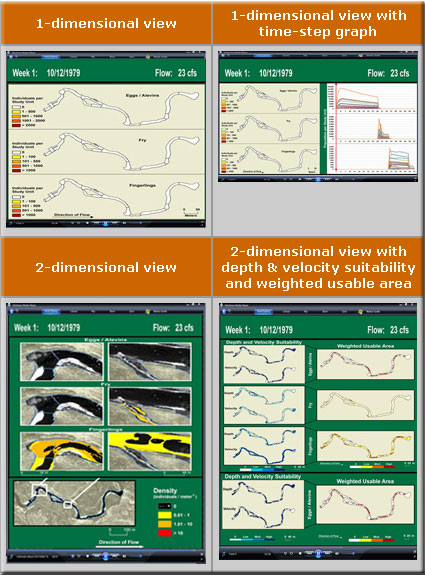Welcome to the USGS Fisheries: Aquatic and Endangered Resources Program
The Fisheries: Aquatic and Endangered Resources Program (FAER) focuses on the study of aquatic organisms and aquatic habitats. Aquatic invertebrates, mussels, fishes, and their unique aquatic communities are investigated to provide scientific information to natural resource managers and decision makers.
Endangered species and those that are imperiled receive special research interest. Research on species diversity, life history, health and diseases, aquatic community ecology, and habitat requirements of fish and other aquatic organisms supports the management, conservation, and restoration of our Nation's aquatic resources.
 |
|
|
| |
Research Highlight
Smart River GIS for Improved Decision Making
 |
| Photos of animated demonstrations of this unique and straightforward way to examine river systems. Photo courtesy of the USGS Fort Collins Science Center website. |
In a first of its kind coupling of a suite of models, the USGS Fort Collins Science Center has brought together a geographic information system (GIS) with a two-dimensional hydraulics model (River 2-D), a young-of-year salmonid production/simulation model (SALMOD), and physical habitat characterization. This new application, Smart River GIS, provides a unique way to examine and understand river systems for management purposes. This prototype model is based on information collected on a short section of the South Platte River in Colorado. Future funding will further model development by applying Smart River GIS to more complex river systems and validating it with existing datasets.
To access Smart River GIS animations, visit <http://www.fort.usgs.gov/SmartRiverGIS/ >. |
|
| |
|
 |
|
Partnership in Action
 USGS is one of the coalition members in the National Fish Habitat Action Plan (NFHAP), which brings together Federal and State agencies, Native American Tribes and Alaskan Natives, and sport fishing and conservation groups to collaborate on fish habitat conservation and restoration around the country. USGS is one of the coalition members in the National Fish Habitat Action Plan (NFHAP), which brings together Federal and State agencies, Native American Tribes and Alaskan Natives, and sport fishing and conservation groups to collaborate on fish habitat conservation and restoration around the country.
To learn more about National Fish Habitat Action Plan visit its Web site at http://www.fishhabitat.org.
|